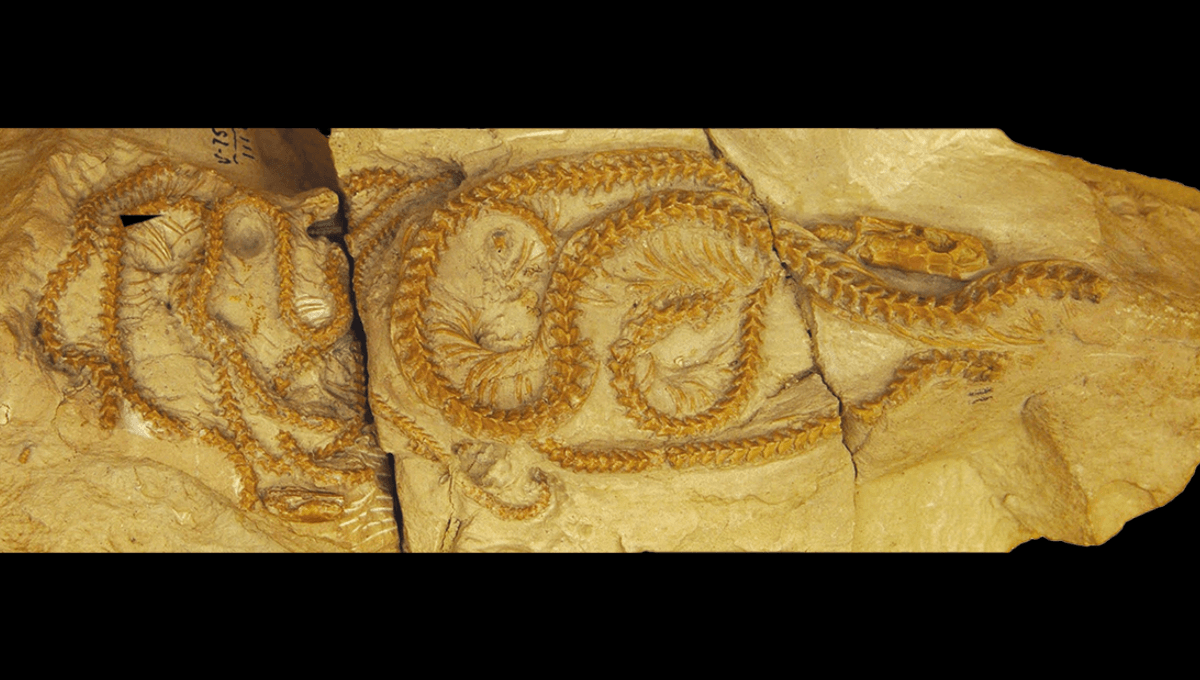
Four snakes found buried together are shedding new light on our understanding of snake evolution. The specimens – which represent a brand new species – lived in North America around 38 million years ago and could help explain how boas and pythons evolved.
The new species has been named Hibernophis breithaupti and the four individual snakes that make up the finding were discovered in the White River Formation in Wyoming, USA. The fossils are extra special since they are nearly complete, and are articulated, meaning the fossils are preserved with the bones still arranged pretty much in the right order. Most other snakes of this period are only known from a few isolated vertebrae, making this find extremely useful for researchers. One of the snakes within the four is twice the size of the others, allowing the researchers to learn more about the different life stages of this ancient species.
The team thinks the new species could belong to the boidae, a family which contains boas and pythons that we see today. The evolution of boas is not well understood. These new specimens are thought to be part of a group called the rubber boas, which were small burrowing snakes.
“We learn quite a bit more about boidae evolution in the broad sense,” says Michael Caldwell, a U of A paleontologist who co-led the research in a statement. “It seems that they probably started out as relatively small-bodied snakes, which is interesting.”
The cluster of the snakes together suggests they were sheltering together during a colder period in what is known as a hibernaculum. The researchers think that this could be the first evidence of the social behavior of snakes preserved in the fossil record. The name “Hibernophis” comes from the Latin “hibernate”, meaning to pass winter, owing to the suspected hibernaculum the snakes were found in.
The team thinks that the snakes were probably preserved during a “small flood episode”. The largest snake is presumed to be an adult while the best preserved smaller snake is thought to be a juvenile. A third specimen is hidden under the body of one of the other snake fossils but is between the two in length.
“Modern garter snakes are famous for gathering by the thousands to hibernate together in dens and burrows,” continued Caldwell in another statement. “They do this to conserve heat through the effect created by the ball of hibernating animals. It’s fascinating to see possible evidence of such social behavior or hibernation dating back 34 million years.”
The paper is published in the Zoological Journal of the Linnean Society.
Source Link: Incredible Fossil Of 38-Million-Year-Old Entangled Snakes Discovered In Wyoming